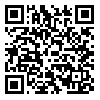Volume 8, Issue 2 (9-2019)
2019, 8(2): 81-92 |
Back to browse issues page
Isfahan University of Technology
Abstract: (8021 Views)
Selecting the appropriate rangeland improvement method is a challenging task for range managers because it requires consideration of various criteria. This study was aimed to evaluate various restoration and reclamation practices in the rangelands of Semirom-Isfahan using Multi-Criteria Decision Making (MCDM) methods. Grazing management, water point development, pit seeding, exclosure, water harvesting and planting almond, fertilization and direct cropping of forage were compared using various social, economic, managerial and environmental criteria. These criteria included cost, local conflict, response time, applicability of method, employment, forage production and their effectiveness. The criteria were weighted from 0 to 1 for all rangeland improvement alternatives based on the results obtained from 30 questionnaires from experts in universities, Isfahan Research and Education Center for Agriculture and Natural Resources, and Natural Resources and Watershed Management Organization of Isfahan. The criteria were ranked based on the Likert method and rangeland improvement alternatives were compared using the MDCM approach and the Facilitator software. According to the results, grazing management and pit seeding were identified as the best rangeland improvement alternatives, with favorability ranges of 0.54-0.98 and 0.6-0.95 respectively Water resource development had a lower risk of failure with the favorability ranges of 0.55-0.76, as compared to the other alternatives. The results, therefore, indicated that performing water harvesting along with planting almond in this area could be an inappropriate rangeland improvement alternative with the favorability of less than 0.5, so it should not be implemented in this area.
Keywords: Range management plans, Water resource development, Risk, Cost, Water harvesting, Livestock grazing
| Rights and permissions | |
 | This work is licensed under a Creative Commons Attribution-NonCommercial 4.0 International License. |




